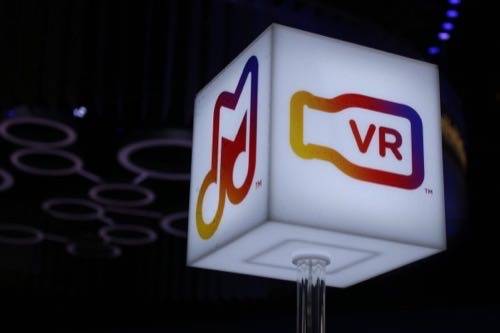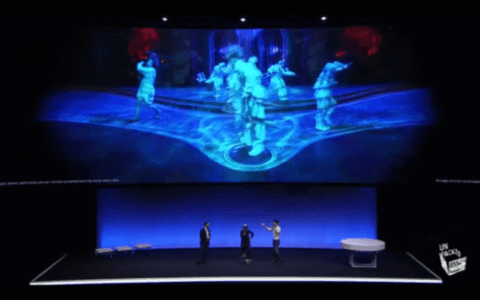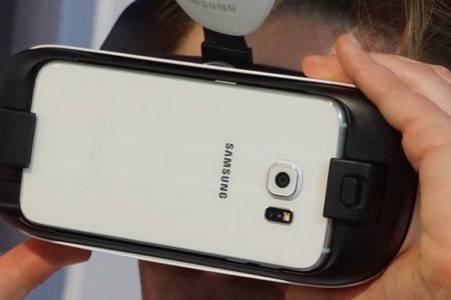The road to virtual reality just broadened this week: Samsung’s Milk VR service, its virtual reality pipeline for VR videos and games, launched Gear Indie, a new channel for filmmakers to reach Gear VR headset users.
The South Korean tech company is passionate about making virtual reality a consumer hit—obviously, with its Oculus-powered facegear leading the way—and it sees polished, immersive VR videos as the way to get there. “Polished” is the key word.
Unlike YouTube, which started supporting 360-degree videos viewable in VR headsets earlier this year, the new Gear Indie isn’t a free-for-all. While anyone can upload to Google’s video site, Samsung uses a screening process to evaluate submissions. The company frowns on videos with jarring cut shots, shaky camera work or tracking, or other ill-conceived execution that could potentially discombobulate or even nauseate viewers.
See also: Samsung Is Getting Serious About Producing Its Own Virtual-Reality Videos
In other words, budding VR filmmakers can’t just waltz in with any old clips; they must send in their submissions so Samsung’s content programming team can assess them and offer feedback. Once you’re in, however, you have access to Samsung’s audience of Gear VR users, along with a few other benefits.
Gearing Up For Indies

Think of Gear Indie as the Sundance Channel or IFC for the virtual-reality set.
When I spoke to Samsung’s Matt Apfel at the Consumer Electronics Show in January, he was very clear about one thing: He wanted video experiences that can show off what storytellers can do with virtual reality.
At the time, the company had just struck a deal with The Walking Dead’s David Alpert to produce a series for Milk VR. Apfel, vice president of strategy and creative content at Samsung Media Solutions Center America, still wants professional-level quality. But now he’s cracking the door open for the indie filmmaking community.
“Generally speaking, our goal with Gear Indie is to cast the widest net possible to source great VR content,” he told me via email. “So, we are encouraging creators at all levels of the ecosystem to participate.”
See also: Virtual-Reality Films Could Put The Whole Industry In The Spotlight
The indie channel is releasing more than 10 videos, and the Samsung plans to debut more each week. Within a few months, the tech company will also launch a series of Gear Indie challenges to inspire and reward filmmakers, complete with opportunities to work alongside virtual reality mentors.
To get started, Apfel said, filmmakers should register and submit works at the Samsung Milk VR site.
When asked what sorts of criteria will be used to approve or deny videos, the company pointed to its online technical and production guidelines. (The site lists content specifications, production guidelines and terms of service.) In addition to technical specifications and viewing experience, the page also includes sections on technique—including shot changes, angles, graphics, effects, audio design and even storytelling recommendations.

When it comes to the latter, the segment reads:
Storytelling
• Fixed cameras are preferred; steady moving cameras at slow pace add variety and detail
• If using moving cameras, they should be mounted on cars, trains, motorbikes, etc. that move at a steady pace and are not bumpy
• Bumpy motion and sudden movements within the video result in a poor viewing experience
• Mounting cameras on boats, bicycles or a person’s head is not advisable
• Eventually, clip production should evolve to multidirectional viewing driven by video production
• Example: head movements should be directed by events within the clip
Samsung also offers some healthy motivation.
“Gear Indie is an important initiative for Samsung,” Apfel said, “so we have high hopes that we can quickly ramp up distribution and monetization opportunities.”
A Few Other Things To Keep Your Eyes On

Of course, you could follow all of the guidelines and still wonder where you stand. Such is the nature of a subjective medium—quality is in the eye, or eyes (plural), of the beholder. So how do you know if you’re on the right track?
Well, unfortunately, Samsung can’t help you along the way, only (in some cases) after the fact. According to Apfel, applicants must finish their videos first. Once they’ve registered for an account online and submit the work, then the team can offer “meaningful feedback” or mentoring.
That’s a tough proposition, especially for independent filmmakers. Shooting video—VR video even more so—is not like programming. You can write and rewrite code ad nauseam, but once you film, you can’t go back in time and make subtle changes. You can try, but capturing the same lighting, angles, and other details in a production setting can be quite impossible. (Continuity can even dog big budget studios.)
A few other finer points about Gear Indie:
- Not all filmmakers will qualify for mentoring.
- Those who do receive feedback should bear budgeting in mind. Because the mentoring works after the fact, they may need to invest in more editing time or even new scenes to address issues.
- Gear Indie is exclusive to Milk VR, which is itself available only for Gear VR users. But the videos don’t have to be exclusive. You’re free to submit them to Samsung, post them on YouTube, and push them anywhere else. “Most content submitted to Gear Indie does not need to be exclusive to Samsung,” Apfel told ReadWrite. “VR is about building an ecosystem to drive consumer adoption.”
Also note that the hardware options, for both viewing and capturing, are growing. New cameras have been emerging at different price points by a variety of tech companies—everyone from Jaunt to Nokia to Google. With the latter’s Jump project, you can even string together GoPros to make your own 360-degree camera.
As the tools emerge and advance, so will the need for refined approaches and techniques. VR is a new medium, and the rules are still being written—which makes any sort of guidance rare and invaluable.
To its credit, at least Samsung is offering mentoring for rising VR auteurs. This sort of help may become crucial, if their ranks swell the way tech companies hope. That’s the best way to ensure immersive experiences that really grab those eyeballs and don’t let go.
Photos by Adriana Lee for ReadWrite

















